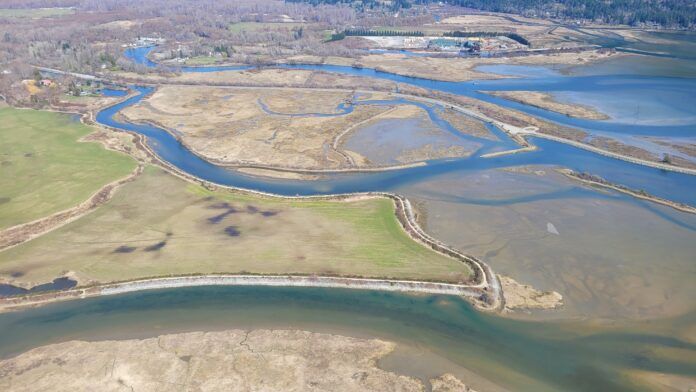A multiyear study of log boom operations in the Cowichan Estuary has wrapped up and the findings are less than ideal for the salmon that call it home.
The study found that over 100 years of log boom-handling operations in the estuary have created multiple anoxic zones, areas that lack oxygen, that damage eelgrass beds.
Researchers also found that the position of the booms in migration corridors makes it easier for seals to catch salmon.
The study also found the impact of predators like seals was amplified by low flows that prevent Chinook Salmon from migrating upriver.
“As climate impacts become more severe, the negative impacts of log booms in key migration corridors and low river flows will increase,” reads a press release from Cowichan Tribes and the British Columbia Conservation Foundation (BCCF).
“We look forward to working with government, industry, and partners to take actions to reverse these impacts before it is too late,” said Chief Cindy Daniels.
The BCCF developed a series of management practices from the study. They suggested sorting logs on land, moving existing booms to deeper waters and moving log boom operations to other locations that are not critical habitats for salmon.






